The most important hurdle every character-action game has to clear is to make me feel like I’m improving as a gamer in the skill-based hack-and-slash department. Sometimes clearing that hurdle means giving me a time-stopping dodge ability to pummel frozen enemies, or a plethora of otherworldly weapons with which to air-juggle my foes. However, one new character-action contender succeeded in making me feel mighty in a whole new way: by incentivizing me to play defensively instead of offensively.
Strayed Lights, by game developer Embers, is an atmospheric Soulslike action-adventure game in which you play as a flame creature made of light and darkness as it battles gigantic shadow monsters and scours kaleidoscopic mountains, caves, and ancient ruins for its lost spark. Strayed Lights will be out on April 25 for PlayStation 5, PlayStation 4, Xbox Series X/S, Xbox One, Nintendo Switch, and Windows.
Strayed Lights’ latest trailer is teeming with all the hallmarks of hack-’n’-slash power fantasies, like Asura’s Wrath-esque biblical battles with multi-armed god-like creatures, super saiyan-style power-ups, and jaw-droppingly cinematic quick-time events that should prime any character-action fiend to salivate. However, Strayed Lights deviates from its contemporaries’ penchant for turning players into a Swiss army knife of destructive combos by instead teaching you to be really good at one high-level defensive tactic: stopping stylish combos in their tracks with a well-timed parry.
When I jumped in, aside from basics like camera movement, the first thing Strayed Lights taught me was how to parry. This had me scratching my head, considering how other action games opt to highlight basic attack strings and the like before tutorializing on defensive tactics, especially advanced techniques that hinge on precise and consistent timing. I found, to my delight, that Strayed Lights’ betting it all on parrying not only made sense from a narrative perspective, but the ways it incentivized me to perform this action consistently felt gratifying as hell to pull off.
At the start of the game, your light-based creature is a pitiful, tiny flame child tumbling through a rain storm. Watching the lil guy nearly get taken away by a gust of wind called to mind the sorrow of an abandoned Charmander caught in a hurricane. Sadly, subsequently maturing into an adult-shaped light creature doesn’t provide much comfort for our lil guy, either. After battling an inner demon, our hero promptly gets its flames stolen and scattered about the world. In Strayed Lights you are forever the underdog.
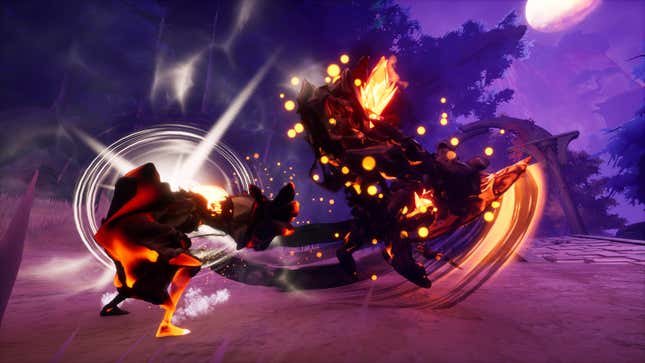
Parrying is Strayed Lights’ bread and butter
While you can go about the game sneaking in scrappy pot-shots in between dodge-rolling into attacking enemies, parries are much more rewarding. Much like the monsters you confront, your flame creature can change from a warm orange color to a cool blue. This color-changing serves as the cornerstone of the game’s combat system. By mimicking a foe’s color before parrying their attack (which frequently alternates between blue and orange) you can greatly boost the energy absorbed when you parry their attack. Parrying not only builds up your finishing blow—think something like DMC’s Royal Guard—but it also recovers any health you lose over the course of a battle. Once you’ve built up enough energy, you can deal out a devastating blast that’ll seal your foe’s fate.
What makes Strayed Lights’ parrying so special is how forgiving it is in comparison to series like Dark Souls. While perfect parries are preferred for health bar replenishing purposes, if you happen to parry with the wrong color or too early, Strayed Lights will still count your parry attempt as a successful block. Meaning, even if I biffed parrying an eldritch horror’s onslaught of berserker-level attacks, I was still successful in blocking their world-ending flurry, which is a cool consolation prize.
Of course, Strayed Lights isn’t totally bereft of offensive maneuvers, like a guard-breaker and a time-stopping attack. But I found these to work more as “get out of jail free” cards whenever I found myself in dire need of space amid an enemy’s onslaught, or to sneak in some jabs to their magic-pixel health bars than methods to start a fight. Instead, this Soulslike encouraged me to unlearn any button-mashing hack-and-slash tendencies I might have picked from other games to overwhelm enemies and instead pay attention to their combo strings and perform a perfect counter.
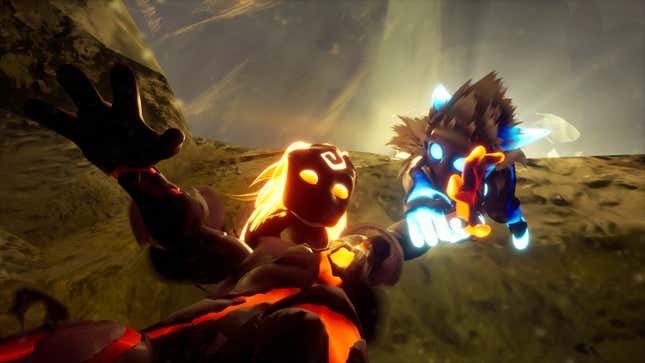
Strayed Lights is pretty chill for a Soulslike
Your goal in Strayed Lights is as open-ended as you want it to be. Much like in the recent Tchia, objectives in Strayed Lights aren’t presented in a linear fashion that makes you complete smaller tasks in order to move on to bigger, more daunting objectives. Instead, Strayed Lights allows your curiosity to dictate which colorful environment you’ll explore, and by proxy, which order you’d like to tackle its dangerous shadow creatures. Should you feel overwhelmed, you can hit the start button, where you delegate your skill points, and teleport to different lands you’ve discovered that might feel more approachable at this moment.
I found Strayed Light’s laid-back vibe surprisingly healing in that, unlike many character-action games, it never demanded perfection out of me. Strayed Lights effectively dismisses the pressure other Soulslike action games imbue in gamers to play flawlessly. Its parry system, coupled with its soothing soundtrack by Austin Wintory (the composer behind Abzu and Journey) and its forgiving autosaves, alleviated any feeling that I was playing the game badly. Strayed Lights makes a traditionally difficult technique more forgiving and fun, and doesn’t admonish you for taking in the sights and choosing to live to fight another day when you’re outmatched. Not every Soulslike needs to be a funeral march.

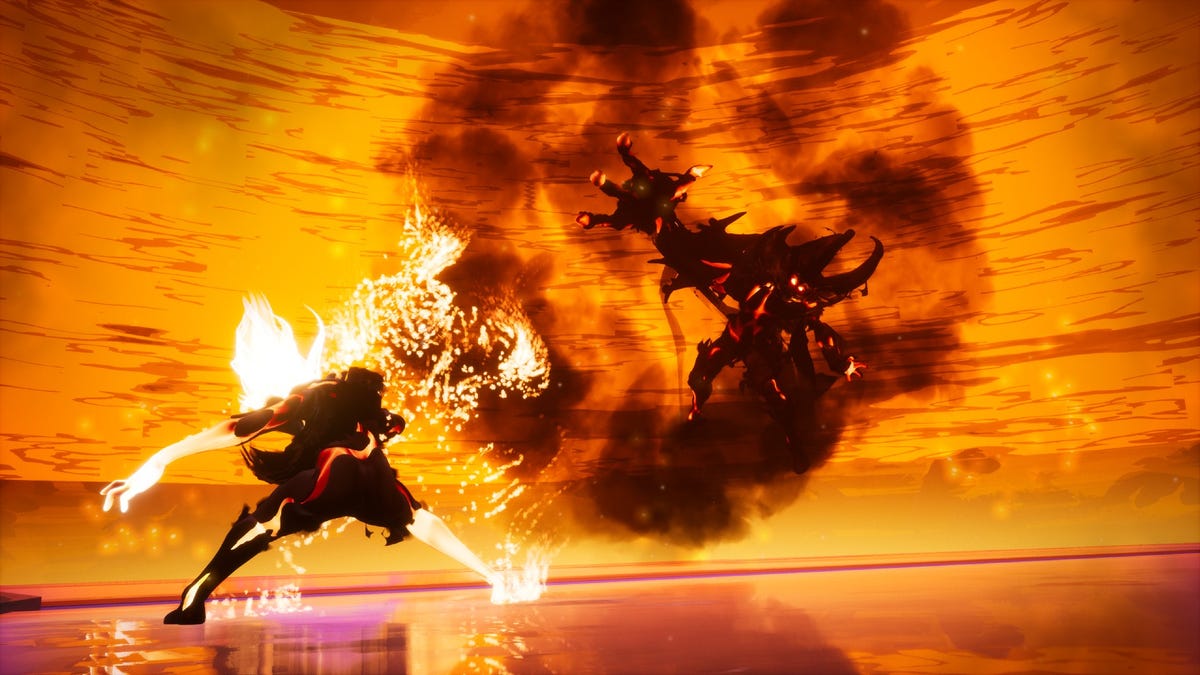

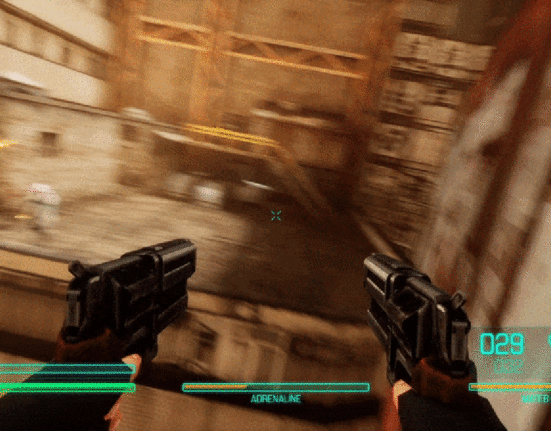


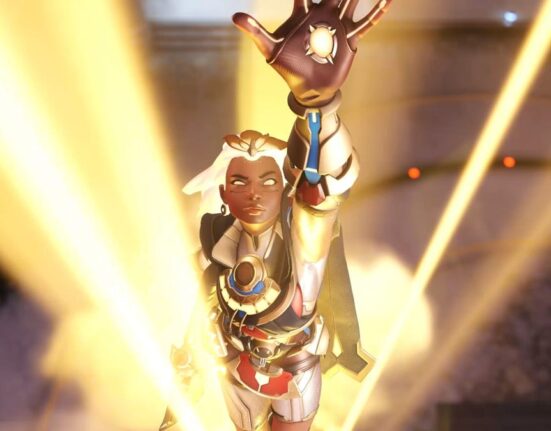
Leave feedback about this